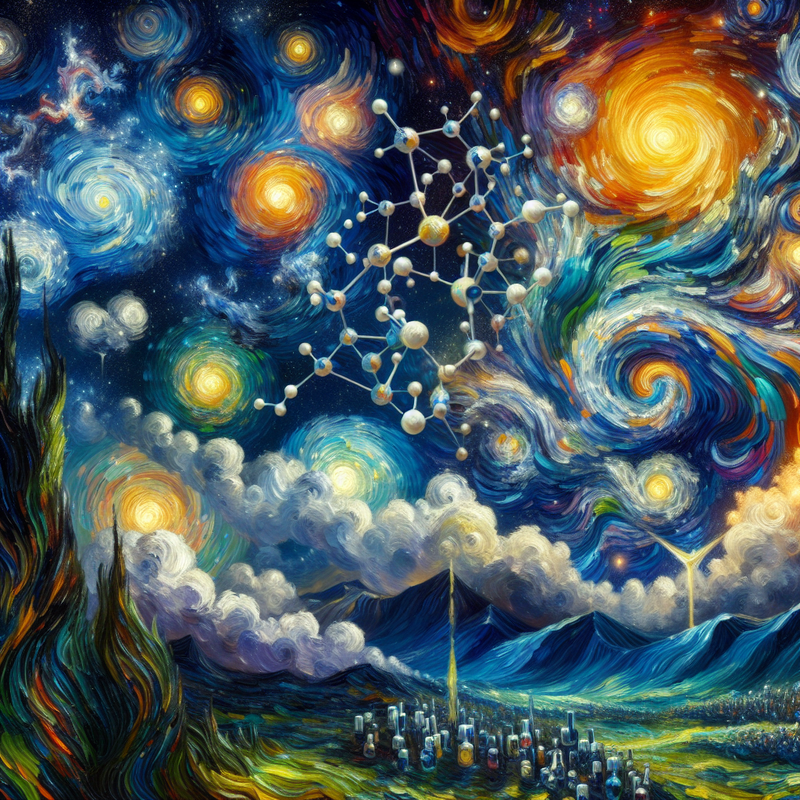Astrochemical Research Enlightens Origins of Life’s Elements
Recent explorations in the cosmos have shed light on a remarkable discovery that essential organic molecules, the cornerstones of life, are scattered across the cosmos, especially on celestial bodies such as comets and asteroids. These revelations have sparked a dialogue among scientists about the likelihood that the components of life as we know it may not be exclusive to Earth but rather spread widely through space.
A Cosmic Abundance of Life’s Elements
The journey to understanding outer space’s organic chemistry began with the Giotto spacecraft’s excursion to Comet 1P/Halley in 1986. Since then, there has been a cascade of discoveries regarding the presence of organic compounds on comets and asteroids. Notably, the European Space Agency’s Rosetta orbiter, while studying Comet 67P in 2015, identified the presence of glycine—an amino acid necessary for protein formation—ushering a new era in comprehension of life’s potential origins.
The University of Bern’s Dr. Nora Hänni observed, “Rosetta has indeed shifted the paradigm,” highlighting how the mission has reshaped our grasp on the prevalence of organic compounds in the cosmos. Data from mass spectrometry aboard Rosetta unveiled a plethora of 44 distinct organics within a single collection period.
Asteroidal Studies Shed Light on Life’s Precursors
The Hayabusa2 and OSIRIS-REx missions, emanating from Japan and NASA respectively, have provided fresh insights into the enigmatic nature of ancient cosmic rocks. The examination of asteroids, namely Ryugu and Bennu, showed a wealth of organic substances including types of amino acids. Philippe Schmitt-Kopplin, an organic geoscientist at the Technical University of Munich, articulated, “It seems to contain almost everything necessary for life to begin.”
The beguiling provenance of these organically teeming asteroids, thought to be as ancient as the pre-planetary era, is a focal point for researchers. Some speculate these compounds were birthed in the vast, cold interstellar realms, others propose the vicinity of newly formed stars as the nurturing grounds. Christopher Glein, a celestial scientist at the Southwest Research Institute noted, “Those of us invested in the cosmic hunt for life are trying to discern how organics could have been delivered to planets in a lifeless state.”
Observatories continue to contribute to this narrative, identifying complex molecules like polycyclic aromatic hydrocarbons (PAHs) in cosmic dust, pondering over the carbon-forming mechanisms analogous to earthly combustion processes. Harvard astrochemist Karin Öberg referenced, “The formation of these molecules in space is surprisingly similar to combustion.”
Astrobiology’s Pursuit to Uncover Extraterrestrial Existence
Connective dots between these off-Earth organics and our own Solar System have become more apparent, alluding to a shared cosmic heritage. While scientific scrutiny is applied to discern genuine bio-signatures from potential misidentifications, intriguing findings imply that certain compounds discovered such as dimethyl sulfide on comet 67P, associated with terrestrial life, might be fashioned through abiotic means.
Ambitious missions like NASA’s Europa Clipper and the European Space Agency’s Juice intensify the exploration efforts, probing the potential presence of organic substances hidden beneath icy exteriors of distant celestial spheres. With these advancements, astrobiologists continue to chip away at one of the most profound enigmas: the existence of life beyond our planet.







